It is 200 years since the birth of Queen Victoria, and there’s a range of celebrations after 118 years after her 64-year reign.
Distinctive Victorian architecture is now a major genre, and included all manner of imposing palace buildings – and a collection of impressive clock towers, quite a few of which survive as town centre icons.
Belfast
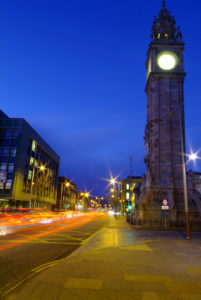
Albert Memorial Clock, Belfast c Tourism NI
The Albert Memorial Clock Tower is one of Belfast’s most famous landmarks. It was built in 1869, in memoriam of the late Prince Albert. W.J. Barre (designer of Ulster Hall) won the contract.
The tower was once frequented by often-drunk visiting sailors, and developed an infamous reputation. It has since undergone development, and is now a vibrant public space with sculptures and fountains.
Herne Bay
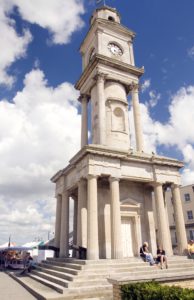
CCC Tourism Summer 2007
Herne Bay’s Clock Tower is believed to be one of the earliest purpose-built clock towers in the UK, and it serves as a memorial to those who fell in the Second Boer War. It was funded by Ann Thwaytes, widow of a wealthy grocer.
John Newman criticised the structure in his 1965 Building of England series, for being ‘inept’. It is now a Grade II listed landmark.
City of Canterbury Council have renovated it, making it contemporary. It is illuminated by LED lights at nighttime, all year round. A children’s book, inspired by the tower, was commissioned by Friends of Herne Bay Cock Tower. The book has served as learning material at local schools, and has been adapted into an animated film.
Clevedon
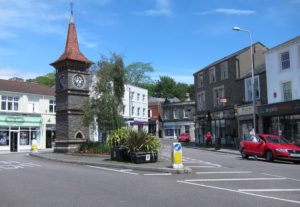
Clevedon Clock Tower c Arpingstone
Clevedon’s Clock Tower stands on a traffic island by the Triangle shopping centre. It brings interesting contrast from life when it was built (in 1898) to now.
Sir Charles Elton donated it in 1898, as a commemoration for Queen Victoria’s Diamond Jubilee. Elton’s grandson provided Elton Ware pottery and an image of Father Time to decorate the tower.
It is a relatively small Clock Tower, and visitors cannot go inside. However, as a Grade II-listed building it is a striking example of Victorian architecture.
Nearby Clevedon Court was the home of the Eltons, and is now a National Trust property.
Malvern
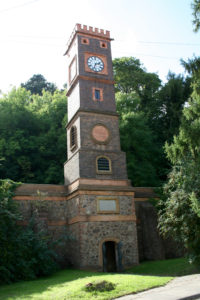
Malvern Clock Tower c Malpensilo
Malvern in Worcestershire is a centre for agricultural industry. It is also a home of car construction (the cult Morgan Motor Car), specialist glass tubing from Chance Brothers and pipe organs from Nicholson Organs.
The Clock Tower was nicknamed ‘the Tank’ – because it was incorporated into a tank that was built to store water. Construction of a larger tank subsequently took place, behind the Clock Tower.
Although out of use for many years, a Heritage Lottery grant recently helped secure the fabric of the building, and restore a supply of Malvern spring water to the base.
Tobermory
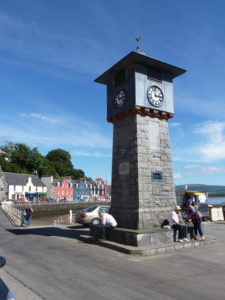
Tobermory Clock Tower c Chris Downer
The Clock Tower in Tobermory is situated on the approach to the Fisherman’s Pier.
Isabella Bird endowed the town’s tower in 1880. A noted traveller, Bird erected it in memoriam of her sister Henrietta – who died of typhoid in Tobermory.
The sisters lived in Houghton, Cambridge in the 1840’s. Tobermory’s Tower is a copy of the one there, which was designed by Bird’s friend Charles Whymper.
Weymouth

Brian Robert Marshall / The Jubilee Clock, The Esplanade, Weymouth / CC BY-SA 2.0
1887 marked Victoria’s Golden Jubilee. To celebrate her 50 years on the throne, Weymouth’s Jubilee Committee approached the Council to suggest the construction of a Clock Tower.
The clock part itself was donated by the area’s MP, Sir Henry Edwards, and the headmaster of the local School of Art was involved in its design.
Weymouth Council invested in a public works scheme in the 1920’s, to address unemployment. This led to wider improvements in the town – including the widening of the esplanade.
Stevenage

Stevenage was one of 29 ‘new towns’ to be built after the Second World War. It was devised as a radical solution to the housing crisis. Lewis Silkin (Minister of Town and Country Planning in the post-war Labour government) saw new towns as ‘utopian’ spaces that would create self-contained communities – and that would give people easy access to the countryside. The first residents moved into new houses in the early 1950s.
The clock tower was built to commemorate the new town between 1957-59, and Queen Elizabeth II visited the new town square (Queensway) in 1959. A bronze portrait of Silkin sits on the west face of the clock.
Surbiton
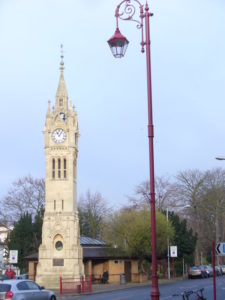
Surbiton’s Clock Tower was commissioned in 1902, to commemorate King Edward VII’s coronation. John Johnson (a prominent architect) won a design competition (out of 116 entries). It was completed in 1908, and given Grade II Listed Building status in 1983.
The Clock Tower’s future has been uncertain more than once. It took six years to build partly due to lack of funds, and its survival was at risk in the 1960s for the same reason. But in both instances local people and Council contributions ensured its longevity.
In 2007 it was discovered that a large number of the Tower’s stone ornamentations were loose. It had to be covered in scaffolding for the purposes of safety. The Council commissioned a report to ascertain the extent of the damage, and eventually a Friends of the Coronation Clock Tower group was formed, to support the tower.
The restoration process was completed in October 2007, and cost almost £100,000.
Hastings
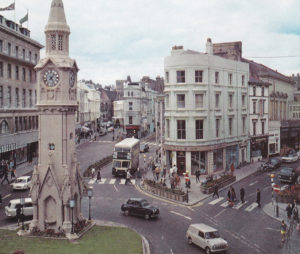
Hastings Clock Tower c Phil Sellens
An arson attack destroyed Hastings’ Clock Tower in 1973. But it has been brought to life by artist Luciana Haill via a new app. Users can interact with animated 3D reconstructions, whilst listening to specially created soundscapes of the Clock Tower and three other landmarks.
The link can be found here.

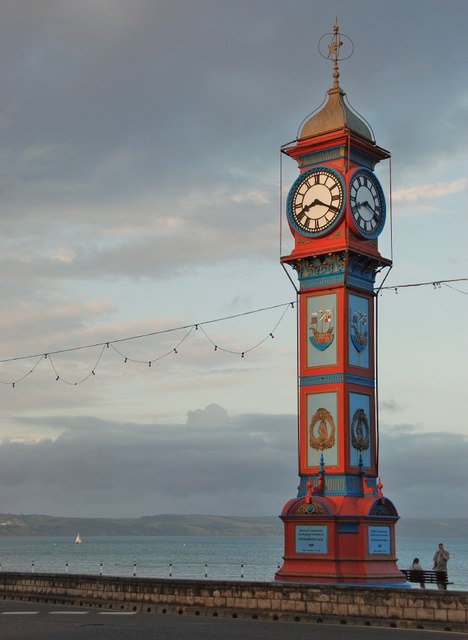
Hi, I made the Hastings Memorial clocktower in augmented reality you can see the whole project here ; http://www.apparitions.site and download the free app here https://apps.apple.com/gb/app/apparitions-ar/id1431496591